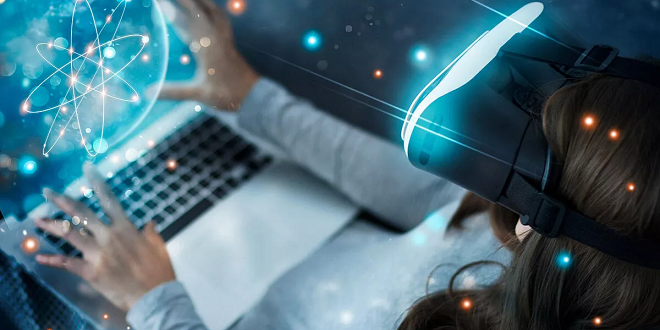In the ever-evolving realm of digital entertainment, Virtual Reality (VR) and Augmented Reality (AR) stand as avant-garde technologies, reshaping the landscape of gaming through a convergence of hardware, software, and advanced computing. This is not merely an upgrade but a paradigm shift, where the spatial boundaries of the physical world and the virtual realm converge to provide users with unprecedented immersive experiences. Join me on a technical exploration as we delve into the intricacies of VR and AR gaming, dissecting the hardware architecture, software intricacies, and the underlying technologies that propel us into uncharted digital territories.
The Hardware Symphony: VR Headsets and AR Devices
At the core of the VR and AR experience lies the hardware – the apparatus that serves as the bridge between the digital and the real. VR headsets, equipped with high-resolution displays, advanced optics, and motion-tracking sensors, encapsulate the user in a virtual environment. These headsets, ranging from standalone devices to tethered systems connected to powerful computers or gaming consoles, deliver a seamless blend of visual and auditory stimuli, captivating users in a multisensory experience.
On the AR front, devices like Microsoft’s HoloLens or smartphone-based AR applications overlay digital content onto the physical world. These devices integrate cameras, sensors, and sophisticated algorithms to track the user’s surroundings and augment their reality in real-time. The technical prowess lies not just in rendering high-quality digital elements but in synchronizing them with the user’s immediate environment, creating a cohesive augmented experience.
Software Alchemy: The Coding Wizardry Behind VR and AR Experiences
While the hardware lays the foundation, it is the software that orchestrates the magic of VR and AR Gaming. Developers delve into intricate coding languages, harnessing the potential of graphics engines like Unity or Unreal to craft immersive virtual environments or seamlessly blend digital elements with reality. The software stack extends beyond game development, encompassing spatial mapping, gesture recognition, and positional tracking algorithms crucial for a fluid and responsive user experience.
For VR gaming, the challenge lies in optimizing graphics rendering, minimizing latency, and creating an environment that responds to user inputs in real-time. VR developers often implement advanced rendering techniques like foveated rendering to allocate computing resources based on the user’s gaze, enhancing visual fidelity while conserving computational power.
AR software, on the other hand, must seamlessly integrate digital content with the user’s surroundings. Achieving this requires sophisticated algorithms for simultaneous localization and mapping (SLAM), enabling the device to understand and map the environment while overlaying digital elements coherently. The software must also account for dynamic changes in the surroundings, ensuring a responsive and stable augmented experience.
The Sensor Ensemble: Tracking and Interaction in VR and AR
The sensor ensemble in VR and AR systems plays a pivotal role in tracking user movements and enabling interactive experiences. VR systems often incorporate a combination of accelerometers, gyroscopes, and external sensors to track head movements, allowing users to explore virtual environments with a high degree of precision. Some advanced VR setups also integrate external cameras or room-scale sensors for full-body tracking and spatial awareness.
In AR, sensors play a crucial role in understanding the user’s immediate environment. Depth-sensing cameras, infrared sensors, and LiDAR technology contribute to accurate spatial mapping, enabling devices to place virtual objects in the real world with remarkable precision. Gesture recognition technologies, whether based on camera inputs or wearable devices, empower users to interact with digital elements in an intuitive manner.
Challenges and Triumphs: The Technical Odyssey
As we navigate the technical landscape of VR and AR gaming, challenges emerge alongside triumphs. Latency remains a perennial concern – any perceptible delay between user input and system response can shatter the illusion of immersion. This necessitates optimization at every level, from hardware performance to software efficiency.
Moreover, ensuring compatibility and accessibility across a spectrum of devices and platforms presents a unique set of challenges. Developers must grapple with diverse hardware capabilities, form factors, and interaction paradigms, demanding a level of technical finesse that goes beyond traditional gaming development.
The Future of Immersive Realities
In the intricate dance between hardware, software, and sensors, VR and AR gaming emerge not just as technological novelties but as harbingers of a future where the boundaries between the virtual and the real are irrevocably blurred. As we delve deeper into the technical nuances, it becomes apparent that VR and AR are not merely tools for gaming but gateways to immersive experiences that transcend traditional entertainment.
The technical odyssey of VR and AR gaming is an ongoing narrative, marked by continuous innovation, breakthroughs, and the ever-expanding horizons of possibility. As hardware becomes more sophisticated, software more refined, and sensors more advanced, the immersive realities crafted by VR and AR are poised to redefine not just gaming but our interaction with digital environments at large. The technical journey continues, and with every advancement, the line between reality and the virtual realm fades into a mesmerizing symphony of immersive possibilities.






